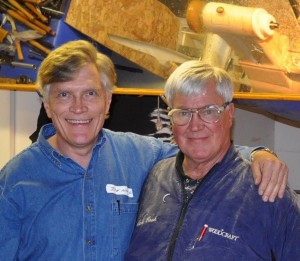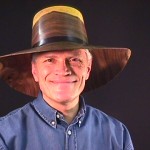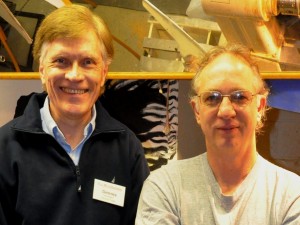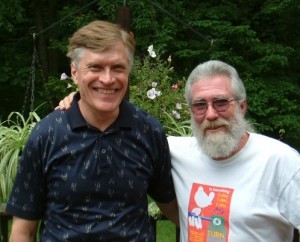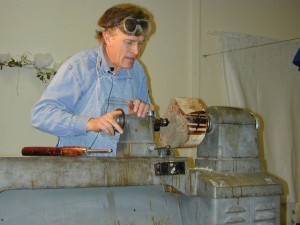 I started my woodturning at Pretoria Boys High school in South Africa in 1966, where, as part of my eighth grade school woodworking project I was required to turn a lamp stand. This item still stands in my workshop as a memory to those early beginnings and the start of my love for the art of woodturning. I was fortunate to have an engineering father, Harold, who built a home lathe and this allowed me to maintain an active interest until I moved to Cape Town.
I started my woodturning at Pretoria Boys High school in South Africa in 1966, where, as part of my eighth grade school woodworking project I was required to turn a lamp stand. This item still stands in my workshop as a memory to those early beginnings and the start of my love for the art of woodturning. I was fortunate to have an engineering father, Harold, who built a home lathe and this allowed me to maintain an active interest until I moved to Cape Town.
There I was able to build my own larger lathe for the princely sum of $45 and this I used for 20 years. I pensioned it off in 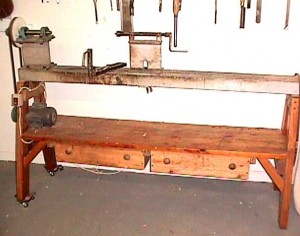 1999 when I moved to the USA and succumbed to the temptation of a Oneway 2436, which is one of the best lathes on the market.
1999 when I moved to the USA and succumbed to the temptation of a Oneway 2436, which is one of the best lathes on the market.
In 1988, I began ten years in Hong Kong where I became known as the typhoon turner, because all the wood I used was collected as the result of the many typhoons which blow through that area. While the rest of the population was taking cover from the storm, I could be found, chain saw in hand, helping the council clear the roads of fallen trees. It was in Hong Kong that I really stated to turn big stuff and to get into turning the root balls of trees with all their interesting inclusions. The move to Hong Kong as the director of an American pharmaceutical company was initially a frustrating one, for the lathe had to stay in storage because apartments in Hong Kong are not very spacious. It was only after four years that a suitable house in the New Territories allowed for a workshop to be set up and for the lathe to be shipped over. That was when one of the only benefits of the typhoons became very apparent. Each year the harvest was put up to dry either as cut logs or as green turned forms to be finished at a later date.
Our move to the USA in 1998 was a major boost to my turning as I was able to join the New Jersey Woodturners Association. I also traveled to the UK where I did Dave Regester’s first formal weekend course and was able to see some of the top UK turners in action at the Axminster show.
My work has taken many turns over the years, but a few consistent themes are evident.
The first is what I call classical hollow form vases. Here my focus is on aesthetically pleasing forms, great curves and finials that work with the piece. In this same theme there are pieces where it is impossible to tell how the piece was hollowed out by disguising the entry hole in the bottom or via decorative groves at the top and matching the wood grain exactly. Many of my inspiration for these vessels come from ancient bottles/pottery and the artists in the glass blowing field
The second theme is what I call root forms. Here I let nature dictate what shape and feel the piece will have. An extension of this is what I call “Windows into Wood” where I combines the vase form but uses the openings which nature provided to allow the viewer accesses into the piece and adds that element of wonder and exploration. In many cases the work that the tree started is augmented by the attention of worms and ants, the voices of all the creatures of nature are respected and add to the beauty of the final piece.
The next theme is what I call “Canvas Irreverence”. I was fortunate enough to spend a week at Arrowmont with Jack Slentz who taught me to take beautiful wood and treat is as my canvas on which to create my own artistic impressions by burning, carving, coloring, sand blasting and generally mutilating the wood to his artistic satisfaction. Many of my platters focus on the planets in the universe which allows my mind to travel far distant places. I also have a strong fascination for the human form, many times depicted as mermaids. After a tough day working in the pharmaceutical industry it is great to let your mind wonder and contemplate the vast beauty of the universe and all the creature that inhabit it. It is by taking time to wonder and dream that some of my best works have materialized. 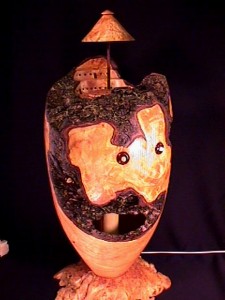
Another theme is what I call “Multi Level Wonders” which takes all my technical expertise to create multi level deep hollow forms and then use them as canvases to create and express my view of the world. My darkest piece by far was created during the Afghanistan war when there was a lot of talk about elaborate cave complexes and weapons of mass destruction. Not surprising the piece has three levels and inside there is a long range missile that lights the cave up at each stage. The cave is equipped with all the bells and whistles such as solar power, defensive missiles and radar detection. This piece reflects a lot about what was happening in my life at that time: I was between jobs and all the news was about the war in Afghanistan and the Axis of Evil. Many of my real breakthrough pieces come from telling the story of life around me.
Another piece on the lighter side of life is call “Ye multi level mine of old.” This piece once more has lights in both levels and an operational hoist for winching up pieces of tiger’s-eye, a semi precious stone. This one is a great hit with the younger minds. I grew up in Africa and one of our next door neighbors polished semi precious stones, which we helped to collect on the banks of the Vaal River; my favorite stone was the tiger’s-eye. When I selected a stone to fill the bottom level of the mine, tiger eye was my natural selection. The young minds who visit my gallery all have to winch up a stone to take home.
My family now resides in Erwinna, Pennsylvania 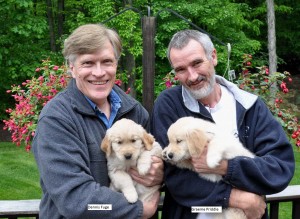 and I have had the good fortune of having some of the worlds best artistic wood turners demonstrate at my home and share their friendship with me. The sharing nature of the wood turning community is one of the true wonders of the world and I am proud to be associated with this wonderful group of humans.
and I have had the good fortune of having some of the worlds best artistic wood turners demonstrate at my home and share their friendship with me. The sharing nature of the wood turning community is one of the true wonders of the world and I am proud to be associated with this wonderful group of humans.
